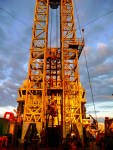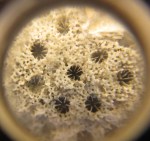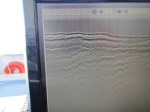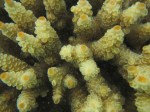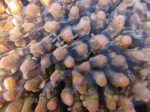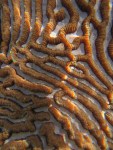GRG members undertake multidisciplinary research to investigate how/why coral systems change over a range of spatio-temporal scales, incorporating both modern and ancient reef systems. Through the study of the geomorphology, sedimentology, stratigraphy, palaeo‐ecology, geochemistry and forward stratigraphic modeling of reefs, we address fundamental questions about reefs and their associated systems. Sydney Uni’s One Tree Island Research Station in the Great Barrier Reef is a common field trip destination but our research is conducted in some of the most beautiful places on Earth. Current lines of research include:
- Controls on coral reef and carbonate platform evolution
- Submerged coral reefs as archives of sea level and climate change and reef response
- Fossil coral reefs as “dipsticks” to understand lithospheric behaviour of foreland basins and hotspot settings
- Numerical modeling (1D, 2D, 3D & 4D) of coral reefs and carbonate platforms
 Heron Island reef slope (photo: Jody M. Webster)
Heron Island reef slope (photo: Jody M. Webster)Controls on coral reef and carbonate platform evolution #reefcontrols
This research theme is focused on understanding the main factors that influence coral reef and carbonate platform evolution, across variety of spatio-temporal scales. Off NE Qld we have shown previously that the Great Barrier Reef “died” at least six times in the last 300-500 ka and has been able to re-establish itself as many times over this period despite major climate changes. More recent work in the GRG has focused on understanding the development of the GBR on millennial  times scales with a new ARC-supported project currently in progress investigating the Holocene and Pleistocene evolution of the GBR. We have also extending this work to different tectonic settings in Papua New Guinea and Hawaii, where have generated new conceptual and 1D, 2D and 3D numerical models accurately showing how reef and carbonate platform evolution are controlled by changes in sea level, subsidence and growth rates.
times scales with a new ARC-supported project currently in progress investigating the Holocene and Pleistocene evolution of the GBR. We have also extending this work to different tectonic settings in Papua New Guinea and Hawaii, where have generated new conceptual and 1D, 2D and 3D numerical models accurately showing how reef and carbonate platform evolution are controlled by changes in sea level, subsidence and growth rates.
Submerged coral reefs as archives of sea level and climate change and reef response #reefarchives
 (After Hinestrosa et al., 2016 – full article here)
(After Hinestrosa et al., 2016 – full article here)This research theme is focused on a largely unexploited nature archive – submerged coral reefs. Our group has pioneered the practice of using submerged coral reefs across the Indo-Pacific as accurate sea level and paleoclimate proxies. For example, work in Hawaii established critical constraints on the timing and magnitude of meltwater pulse 1A, a dramatic, global jump in sea-level associated with catastrophic ice sheet collapse. In the past 10 years, GRG, in partnership with our collaborators, has built an international recognized program of research in this theme with new investigations of drowned reefs in Tahiti, the Great Barrier Reef and the Western Australian shelf and further work in Hawaii. These projects are linked to several large international research programs including the Integrated Ocean Discovery Program (IODP) which is focused on recovering sediment cores (Exp. 310 – Tahiti; Exp. 325 – GBR; 716-Full2 proposal – Hawaii) from the sea bed to understand past sea level and climate changes and reef response.
 GRG drowned coral reef study sites (Source: GRG)
GRG drowned coral reef study sites (Source: GRG)Fossil coral reefs as “dipsticks” to understand lithospheric behaviour of foreland basins and hotspot settings #reeftectonics
Integrating new age, bathymetric and reef modeling constraints, this work provided new insights into the lithospheric dynamics of foreland and hotspot settings. We have generated a new
 Map showing offshore study area (after Puga-Bernabéu, Á, et al. 2016).
Map showing offshore study area (after Puga-Bernabéu, Á, et al. 2016).Puga-Bernabéu, Á., Webster, J. M., Braga, J. C., Clague, D. A., Dutton, A., Eggins, S., Fallon, S., Jacobsen, G., Paduan, J. B., and Potts, D. C., 2016, Morphology and evolution of drowned carbonate terraces during the last two interglacial cycles, off Hilo, NE Hawaii: Marine Geology, v. 371, p. 57-81.
tectonic model relating the overlying thrust mass and spatial variations in the flexural rigidity of the underlying lithosphere to explain regional-scale platform tilting in PNG. We also reconstructed the first independent history of vertical motions of the Lanai and Molokai confirming their stability and the likely occurrence of mega-tsunamis in the islands. Comprehensive analysis all the drowned reefs in the Mau Nui Complex has constrained the tilting of the reefs in response to lithospheric flexure associated with sequential volcano growth and northwest plate motions.
- Some beautifully preserved corallites!
- Acropora
- Faviidae
- Acropora
- Acropora

